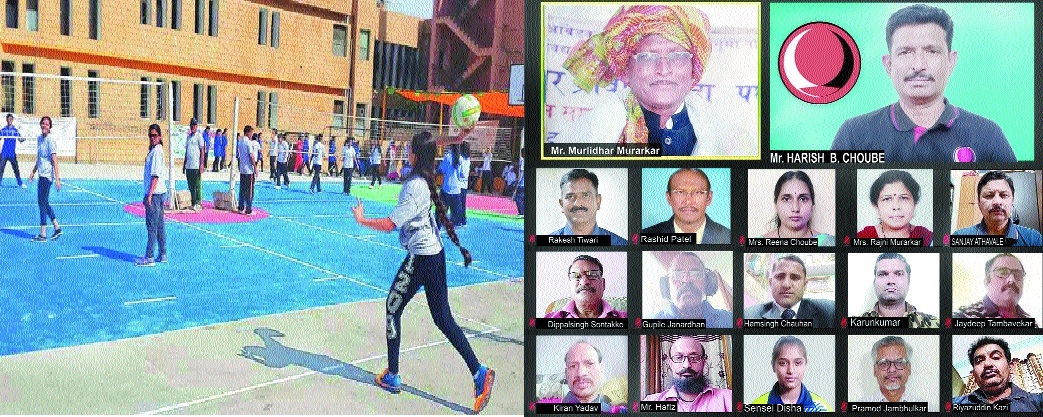Throwball is developing fast in India, says Murarkar
| Date :26-May-2021 |

Principal Correspondent :
“THROWBALL is a very popular game and requires very less equipment. It is a very easy game with very less technicality in terms of rules and regulation. The game is developing very fast in India,” said Murlidhar Murarkar, Vice-President, Throwball Federation of India and Asian Throwball Federation. Murarkar was speaking during the online Karate and Sports Seminar for Physical and Spiritual Development of Sportspersons organised by Karate Budokan International (Vidarbha Region). Kyoshi Harish B Choube, Black Belt 7th Dan, National Chief Instructor and Examiner, Karate Budokan International and National Sports Co-ordinator, is the host of the webinar. Speaking further about its origin, Mururkar said that the game is a non-contact sport played on a rectangular court across a net between two teams of nine players each. “Dr Harry Crowe Buck, who was father of Scientific Physical Education in India and Founder of Young Men’s Christian Association’s (YMCA) College of Physical Education of Madras in the year 1920 introduced the game.
Throwball is very popular among women in England and Australia during 1930s. “It is believed that throwball was brought to YMCA College of Physical Education, Chennai, India in 1940s as a sport for women. To attract more players, Dr Buck drafted guidelines, rules and regulations of the game in 1955. “Thereafter till 1960 throwball was a regular part of school games for girls in India. At that time, it was very much popular in the Missionary Schools,” informed Murarkar. “With keen interest and with efforts of Prof Jagat Singh Chauhan of Haryana, who was also founder of Handball Federation of India, formed Throwball Federation of India on 15th January, 1978 in Madan Mohan Malviya Stadium, Allahabad and since then Haryana, Gujarat, Uttar Pradesh, Madhya Pradesh, Maharashtra, Delhi, Punjab and Rajasthan State Throwball Associations are striving hard by organising competitions at national level to promote and develop the game in India and abroad,” Murarkar added.
Elaborating further about the competitions held in India, Dr Murarkar informed, “Shashi Prabha of Haryana organised the first national throwball championship in Jind, Haryana in 1978. Delhi men team emerged the winner of the inaugural championship. Zineeth Fernando of Colombo, Sri Lanka imparted coaching to Indian team at Government College, Jind, Haryana in 1982 for a fortnight and then India toured Sri Lanka in 1982,” said Murarkar. Murarkar said the throwball ground requires a very small piece of evenly surfaced land, rectangular in shape for senior and junior categories. The equipment required are the two poles, a net, a ball and a whistle. “Senior National Championships, Junior National Championships, Sub-Junior National Championships and Federation Cup Tournaments are regularly organised in India by the federation. Twenty-two State and Union Territories are affiliated with Throwball Federation of India and all units participate regularly in all competitions organised by the federation,” mentioned Murarkar. About the rules of the game Murarkar said, “an official game is played between two teams of nine players each. Any player can be substituted among 12 players at any time of play.
Three substitutions are allowed for each team during a set. “A match is won by the team that gains two sets out of three and three sets out of five, in accordance with the rules laid down by the organising committee. Each set consists of 15 points. “In the best-of-three sets or five sets, the court must be changed at the score of eight by any team, in the deciding set. In case of 14-all, the play is continued until two points lead gained is by a team. After 16-all, the team scoring the 17th point wins the set,” concluded Murarkar. The webinar concluded with an interactive session. Reena Choube, senior national throwball player, proposed a vote of thanks.